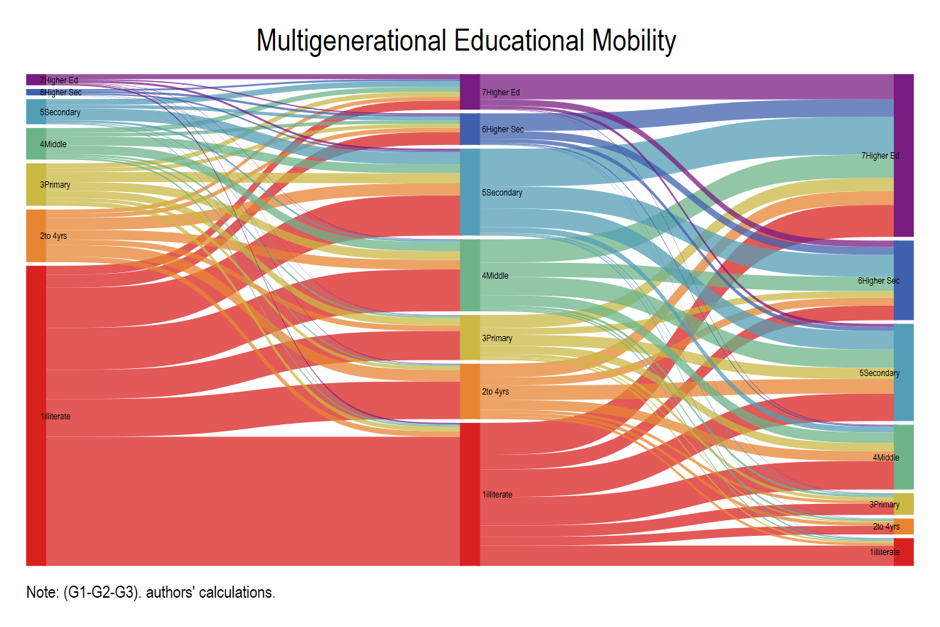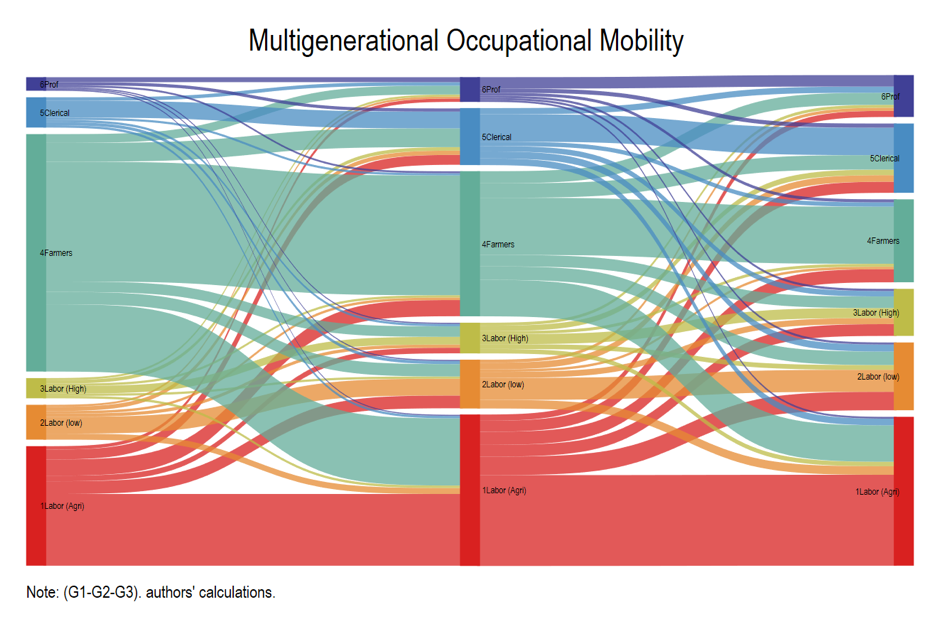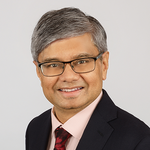Blog
Social mobility among disadvantaged groups in India
In recent decades, India has experienced rapid economic growth alongside radical affirmative action programs enacted since independence. This column explores what we know about the impact on social mobility. While there is some evidence of educational mobility, occupational mobility has not increased over three generations for socially disadvantaged groups. The implication is that neither growth nor affirmative action are panaceas for increasing the life chances of children born into disadvantage.
Social mobility – usually understood as movement from a lower to a higher level of education or occupational status, or from a lower to a higher social class or income group – is the great hope of economic development. For many, it is also the mantra of a good society. Whether there is social mobility in society is a question of crucial policy importance in emerging economies, which have undergone modernization as they have opened up to the world economy.
Over the past few decades, several developing countries have experienced rapid economic growth alongside rising inequality. How has growth affected the life chances of children, especially those from disadvantaged backgrounds? And has the increase in inequality led to lower social mobility, as suggested by the Great Gatsby Curve?
Among developing countries, India had strong economic growth all through the 2000s, alongside a sharp increase in inequality. This is a country with large social cleavages and inequalities in opportunities for socially disadvantaged groups such as Scheduled Castes (SCs), Scheduled Tribes (STs), and religious minorities, especially compared with forward castes and the majority religious community (Hindus). At the same time, since independence in 1947, the Indian government has enacted radical affirmative action policies, providing quotas in state and central legislatures, village governments, the civil service, and government-sponsored educational institutions to SCs and STs.
Has economic growth and the affirmative action programs led to increased prospects for the social mobility of SCs, STs, and Muslims? Or has the increase in inequality entrenched existing inequities and lessened the likelihood of social mobility for India’s socially disadvantaged groups?
An emerging body of research is examining educational and occupational mobility in India. An early study finds progressive occupational mobility by birth cohort, meaning that mobility for some disadvantaged groups often exceeds mobility for more advantaged groups. For example, the researchers find that mobility among SCs and STs born during the period 1965-84 exceeds mobility among higher castes. This implies that conditions are right for furthering equality between groups – at least in occupational status.
For educational mobility, the same study finds a decrease in educational persistence – that is, more social mobility. More recent work on educational mobility also finds that SCs and STs have had upward educational mobility compared with forward castes, while for Muslims, educational mobility has steadily declined from the 1960s to the present.
However, both studies focus on the association in socio-economic status between adjacent generations, measuring how close the correlation is between the status of parents and that of their children. This approach implicitly assumes that the effect of earlier generations on their offspring’s socio-economic status is indirect.
But it is important to examine beyond adjacent generations and to look at multigenerational mobility. The study of multigenerational mobility enables us to understand the extent to which inequality of opportunity has reduced in a country over time.
In our recent work, we examine educational and occupational mobility for over 25,000 grandfather-father-son triads in the context of India, a country that has witnessed significant economic, political, and social change, including the onset of radical economic reforms in 1991, and the launch of major affirmative action programs for the SCs, STs, and Other Backward Classes (OBCs).
Figure 1: Multigenerational Educational Mobility

Figure 1 shows educational mobility among grandfather-father-son (G1-G2-G3) triads. We can see that a significant portion of the grandfathers (G1) were illiterate, but that many of their sons (the fathers, G2) had upward educational mobility. This upward mobility trend in education level continues between G2 and G3, but the overall rate is much lower.
Figure 2: Multigenerational Occupational Mobility

From Figure 2, for occupational mobility, we can see that in the first generation, some fathers’ sons were upwardly mobile to professional and clerical jobs, but that a majority of them had persistent or downward mobility – to casual workers on agricultural estates and other informal or primary sectors. This trend persists between G2 and G3, but the magnitude is comparatively smaller.
Moving beyond the descriptive analysis, we use an innovative double-difference regression method, where we estimate grandfather-father-son triad regressions, with generations 1 and 2 pooled together, and the first ‘difference’ being a time dummy for the third generation and the second ‘difference’ being the ‘treatment’ dummy for social group or religion or location.
Overall, we find that multigenerational mobility increased over time for education, but not for occupation. Educational mobility is higher for the G2-G3 pair than for the G1-G2 pair, which means that the existing rate of upward mobility increased.
In contrast, there is little difference in the rate of occupational mobility between the G2-G3 and G1-G2 pairs. This means that in India, the rate of upward mobility by occupational status is historically low – much lower than the same rate for educational mobility – and persistently so. This finding opens up many questions, particularly about what drives this low rate in such a rapidly developing country.
We also find clear evidence of a ‘grandfather effect’. A grandfather’s occupational and educational status has an effect on their grandson’s occupational and educational status, independent of the father’s status.
Further, the findings by social group suggest a murky picture of social mobility in India. We find that multigenerational mobility for Muslims in education and occupation has decreased in comparison with that of Hindus. While multigenerational educational mobility for SCs/STs and OBCs has increased relative to General Castes, we do not find evidence of increased occupational mobility over the three generations for SCs/STs/OBCs relative to General Castes.
The finding that even in the period of rapid economic growth, we have not observed increased social mobility among socially disadvantaged groups relative to the more advantaged groups suggests that a rising tide does not lift all boats.
Policies are needed to act on the entrenched social and economic inequities in opportunity that affect SCs, STs, and Muslims in India. Our findings suggest that affirmative action programs cannot by themselves address the deep inequities that India’s socially disadvantaged groups face, and that the government must enact a broader set of policies that address the causes of the lack of social mobility among India’s poorest citizens.
Policies that promote better provision of schooling and infrastructure in areas where these social groups are located, and higher quality job creation, especially in the lower ends of the occupational structure, may be good options.
Kunal Sen is Director of UNU-WIDER and Professor of Development Economics at the Global Development Institute (GDI), University of Manchester.
Anustup Kundu is a Research Consultant at UNU-WIDER. His research interests lie at the intersection of Development Economics and Behavioral Economics.
This article was first published on GlobalDev.org. It is available in English, French, and Spanish.
It is part of a series on Social Mobility organized by GlobalDev partnership with UNU-WIDER. Timothy Shipp, Communications Associate at UNU-WIDER, and Rahul Lahoti, Research Associate at UNU-WIDER, joined the reviewing panel for this series.
The views expressed in this piece are those of the author(s), and do not necessarily reflect the views of the Institute or the United Nations University, nor the programme/project donors.
 Join the network
Join the network




